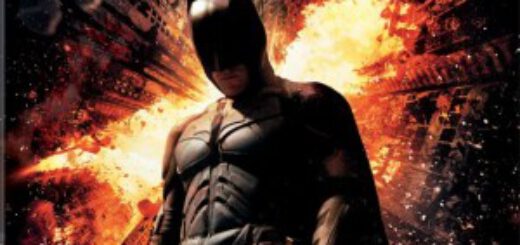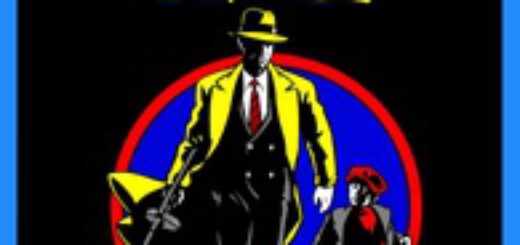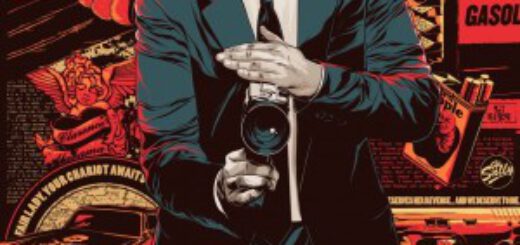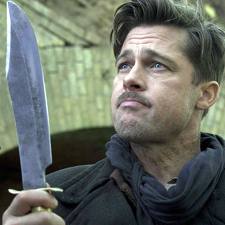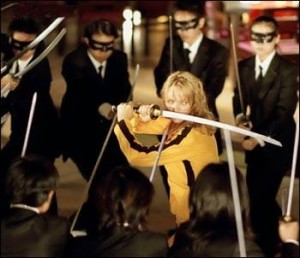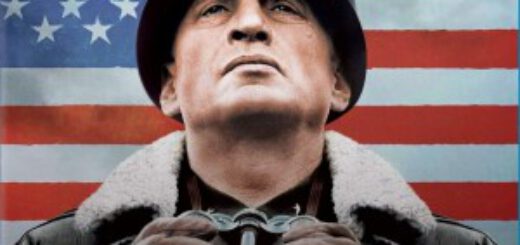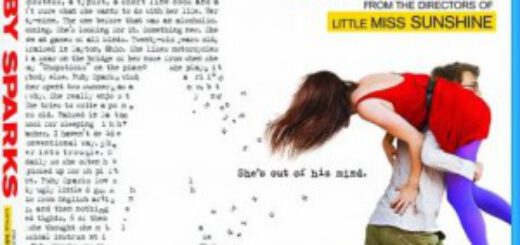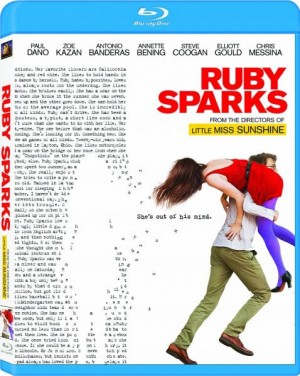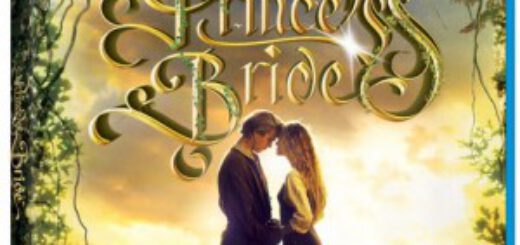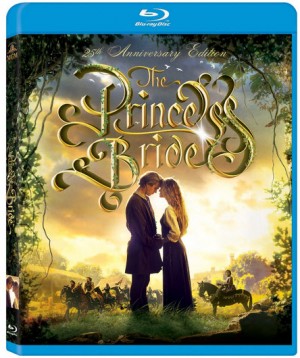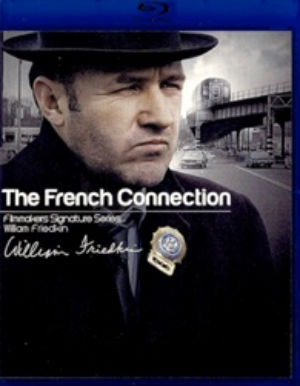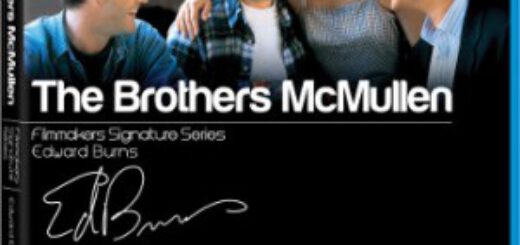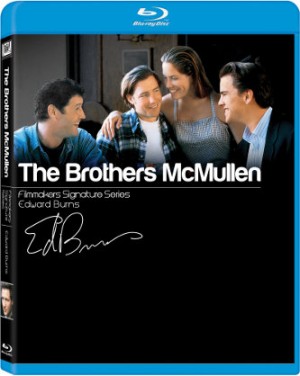REVIEW: The Dark Knight Rises
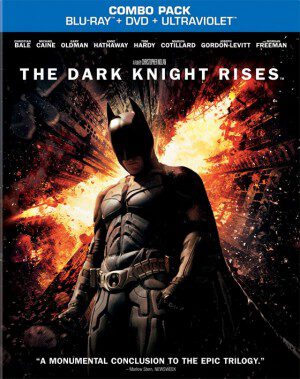 I will stipulate that The Dark Knight Rises is not necessarily the movie Christopher Nolan set out to make. The tragic death of Heath Ledger derailed his plans to conclude the trilogy with more between Batman and the Joker so he spent the last four years rethinking how he wanted to end his trilogy. What he crafted is a definitive conclusion to his vision of Batman and it is a mostly satisfying film experience. Now out on disc from Warner Home Video, we’re given a chance to re-evaluate it.
I will stipulate that The Dark Knight Rises is not necessarily the movie Christopher Nolan set out to make. The tragic death of Heath Ledger derailed his plans to conclude the trilogy with more between Batman and the Joker so he spent the last four years rethinking how he wanted to end his trilogy. What he crafted is a definitive conclusion to his vision of Batman and it is a mostly satisfying film experience. Now out on disc from Warner Home Video, we’re given a chance to re-evaluate it.
Gotham City is a place of corruption, we’ve been told this extensively in Batman Begins and the presence of the Clown Prince of Crime in The Dark Knight reinforces that. As a result, the theme returns in the third installment but with every passing film, Gotham is less and less of a character and more of a stand-in for New York City. In the first part, Gotham had the Wayne-built monorail system, a city bathed in grays and blacks, and the rise of a costumed champion to help stem the corruption before Ra’s al Ghul and his League of Shadows destroyed it. Exactly why Gotham of all the cities in the world is the vilest and deserving of fiery justice has never made sense in this trilogy.
The second film showed us how the city’s corrosive nature could take down even the most noble of men, district attorney Harvey Dent/ When the acid ruined half his face, the act sent him into the darkness and Two-Face emerged. Nolan twisted events so that Batman took the blame to preserve Dent’s reputation telling Commissioner Gordon he was giving the city the Batman it needed, a bogeyman to be feared. And then he vanished.
We pick up eight years later and Wayne (Christian Bale) has become a recluse and here’s where I started having trouble with the story. If Batman was the bogeyman, then you need to see him now and then to reinforce the message. Instead, he broods in Wayne Manor with a silly beard, mourning the death of Rachel Dawes (Katie Holmes/Maggie Gyllenhaal) who rejected him pretty solidly in the first film and again the second, although Alfred (Michael Caine) kept the news from him. Wayne lost his parents and spent seven years to become a force of vengeance, returning to Gotham to rid it of the evil that turned children into orphans. His girlfriend rejects him and dies so he broods for eight years? I don’t buy that at all. And what has he done for eight years? We’re never told. One could conclude that the physical toll of the first two films have rattled him badly, eradicating his knee cartilage and causing head trauma which might explain his mood, but we’re left guessing.
 Gotham, we’re told, has enjoyed nearly a decade of unprecedented peace thanks to the draconian Dent Act which apparently handed down such stiff sentences (without chance of parole) that after stuffing 1000 criminals in the poorly located Blackgate Prison, crime has dropped to little more than jaywalking. Mayor Garcia (Nestor Carbonell) has remained in office but the political tides are turning and he intends to replace Gordon, a commissioner needed during a war, less so during peaceful times.
Gotham, we’re told, has enjoyed nearly a decade of unprecedented peace thanks to the draconian Dent Act which apparently handed down such stiff sentences (without chance of parole) that after stuffing 1000 criminals in the poorly located Blackgate Prison, crime has dropped to little more than jaywalking. Mayor Garcia (Nestor Carbonell) has remained in office but the political tides are turning and he intends to replace Gordon, a commissioner needed during a war, less so during peaceful times.
As all of this happens, the masked terrorist Bane (Tom Hardy) has come to Gotham. For six months, he has been overseeing a surreptitious mining of the city’s infrastructure, building an underground army that has become the stuff of rumor and legend. Why and what motivates him remains a mystery until the final act.
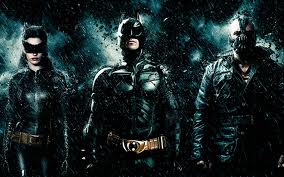 Apparently the city’s corrupting nature has woken up and forces are at play that brings Wayne and his alter ego back into the spotlight. That both reappear nearly simultaneously and no one makes the connection shows how somnambulant the city’s populace has grown. Initially, he dips his toe back into the game of life not because Alfred harangued him for the umpteenth time but when Selina Kyle (Anne Hathaway) manages to steal his mother’s pearl necklace, a physical reminder of his loss. Her carefree approach also sparks something missing in his own soul.
Apparently the city’s corrupting nature has woken up and forces are at play that brings Wayne and his alter ego back into the spotlight. That both reappear nearly simultaneously and no one makes the connection shows how somnambulant the city’s populace has grown. Initially, he dips his toe back into the game of life not because Alfred harangued him for the umpteenth time but when Selina Kyle (Anne Hathaway) manages to steal his mother’s pearl necklace, a physical reminder of his loss. Her carefree approach also sparks something missing in his own soul.
 Apparently, the city’s acidic touch has been centered on their financial sector and there John Daggett (Ben Mendelsohn) has been manipulating the markets, using Wayne’s stolen fingerprints, to force Wayne to lose control of his company so Daggett can gain access to the fusion device that could mean clean energy for the city but can also be weaponized and therefore is mothballed by Lucius Fox (Morgan Freeman). Daggett, we learn, hired Bane to help him gain control of the device, but Bane took the contract in order to further his own agenda.
Apparently, the city’s acidic touch has been centered on their financial sector and there John Daggett (Ben Mendelsohn) has been manipulating the markets, using Wayne’s stolen fingerprints, to force Wayne to lose control of his company so Daggett can gain access to the fusion device that could mean clean energy for the city but can also be weaponized and therefore is mothballed by Lucius Fox (Morgan Freeman). Daggett, we learn, hired Bane to help him gain control of the device, but Bane took the contract in order to further his own agenda.
Batman’s return is exciting to one and all as a veteran cop tells another, “You’re in for a treat”. Nolan does an excellent job brining the action to life and the film is a visual stunner. Where he falls down repeatedly is neglecting to give the characters’ much depth. Wayne and Kyle and maybe Gordon have shades to them while everyone else is cardboard. Apparently, out of thousands of cops, the only one with a brain is John Blake (Joseph Gordon-Levitt) and others throughout the film show up, more the plot along and vanish so none feel real. Alfred whines in a one-note performance, the Mayor is cypher, and even Bane lacks the shades of brilliance he had in the comics. There are some storytelling gaps of logic as well that appear here and there, making you scratch your head.
 Events proceed until Bane detonates his bombs, isolating Gotham from the world in a nod towards the No Man’s Land storyline and his thugs turn the city into a prison state. A city that refused to kill one another in the second film suddenly cowers beneath Bane’s bellicose tones. Sorry, don’t buy it at all. Bane gains access to the fusion device turns it into a nuclear bomb but only a handful of people seem to know it will destruct in five months one way or the other given its unstable nature. We briefly see citizen’s justice as the 99% exact vengeance against the 1% presiding over by Jonathan Crane (Cillian Murphy), dispensing not fear but death sentences. Finally, the city’s corruptive nature, very thing Ra’s has tried to stamp out, has taken hold of its citizens. What life during this time was like should have been explored in far greater depth, similar to the two boat dilemma seen in the second film.
Events proceed until Bane detonates his bombs, isolating Gotham from the world in a nod towards the No Man’s Land storyline and his thugs turn the city into a prison state. A city that refused to kill one another in the second film suddenly cowers beneath Bane’s bellicose tones. Sorry, don’t buy it at all. Bane gains access to the fusion device turns it into a nuclear bomb but only a handful of people seem to know it will destruct in five months one way or the other given its unstable nature. We briefly see citizen’s justice as the 99% exact vengeance against the 1% presiding over by Jonathan Crane (Cillian Murphy), dispensing not fear but death sentences. Finally, the city’s corruptive nature, very thing Ra’s has tried to stamp out, has taken hold of its citizens. What life during this time was like should have been explored in far greater depth, similar to the two boat dilemma seen in the second film.
Bane breaks Batman’s back. Anyone who read the comics knows this is coming and we anticipate an interesting recovery sequence, one that does not rely on the magical healing touch used in the comics. That Bane left Gotham to fly Batman to the very pit that spawned him, half a world away, makes little sense. Nolan went for a far more painful and realistic solution but also it slows the film’s momentum to a crawl and we really don’t learn much about Bruce Wayne during this protracted sequence.
 He finds his mojo, returns to Gotham and really does become the Batman the city needs. His presence is inspirational: to children, to Gordon, and even to Kyle. The final act is the retaking of Gotham and destruction of the bomb. It’s overly long and at times tedious as people stop to do things that make little sense given how little time they have and knowing how unstable the bomb is. Gordon, for example, takes time to go to the suburbs (or so it looks) to collect the inept Foley (Matthew Modine).
He finds his mojo, returns to Gotham and really does become the Batman the city needs. His presence is inspirational: to children, to Gordon, and even to Kyle. The final act is the retaking of Gotham and destruction of the bomb. It’s overly long and at times tedious as people stop to do things that make little sense given how little time they have and knowing how unstable the bomb is. Gordon, for example, takes time to go to the suburbs (or so it looks) to collect the inept Foley (Matthew Modine).
As the clock ticks inexorably to 0:00, characters stop to talk, a lot. The story slows to a crawl as characters finally reveal their true feelings and motivations and here. The worst story logic is probably showing us five seconds until a nuclear explosion but somehow Batman escapes the blast radius with any burns.
Nolan offers us the few storytelling surprises in the whole film. Among them is Miranda Tate (Marion Cotillard) who has had something to do with the fusion device and Wayne for years, and has hints of an interesting character, left unexplored.
The climax goes as expected and by this point you see how Nolan has set this up to be a conclusion to the trilogy. This has the feeling of beginning, middle, end, with plenty of connective tissue tying all three films together and for that Nolan, his writing partners Jonathan Nolan and David S. Goyer get kudos. The major players in these films have been masked, rarely revealing their true selves, offering up one face or another needed from the overt Batman/Wayne or Two-Face to players like Daggett and Crane. These conflicting natures were a lovely touch to the films but those who are exactly as they seem – Alfred, Gordon, Rachel – feel like lesser characters as a result.
 Bale does a good job showing the pain and emotional emptiness he feels until forces demand he wake up. But to me, the best performance goes to Hathaway who instilled Kyle with moral conflict and enough depth to make her worthy of more. The rest do a commendable job although Hardy seems wasted as Bane since he never gets to really act, just strut and punch. Oldman’s Gordon and Levitt’s Blake are serviceable and everyone else feels more or less stock, robbing the film of its richness.
Bale does a good job showing the pain and emotional emptiness he feels until forces demand he wake up. But to me, the best performance goes to Hathaway who instilled Kyle with moral conflict and enough depth to make her worthy of more. The rest do a commendable job although Hardy seems wasted as Bane since he never gets to really act, just strut and punch. Oldman’s Gordon and Levitt’s Blake are serviceable and everyone else feels more or less stock, robbing the film of its richness.
I have liked but never loved this take on the Batman, from the flimsy cape to the over-muscled tumbler. Nolan had some interesting things to say and explore in these three films but always came up short, never really exploring the themes as they deserve or making the characters feel real enough to react to these events. Gotham City remains a corrupt place in need of justice beyond that the police can offer. It needs the very champion its corruption birthed and it will be interesting to see what the next filmmaker brings to the enduring mythos.
The film comes nicely packaged under a lenticular cover and contains two Blu-ray discs – the film and the special features – with a standard DVD edition of the film as disc three. An Ultraviolet code also can be found within the case. You’ll be very pleased with the quality of the transfer as all the shadows and blacks are well-preserved without losing clarity. The sound is above-average for those who listen to the DTS-HD Master Audio 5.1 surround track and you won’t miss a note of Hans Zimmer’s excellent score.
 The filmmaking was meticulous recorded allowing them to slice and dice the footage into bite-size featurettes covering everything you might want to know about the process. Ending the Knight Production (68 minutes), Characters (28 minutes), and Reflections (15 minutes), you get some fine pieces on the production then there are the characters, and finally, two short pieces trying to put a bow on the entire trilogy but they both felt far too self-congratulatory. My favorites may have been Anne Hathaway talking about her research into playing Selina Kyle and how the aerial opening was accomplished. A lot of good information is shared with rebuilding Wayne Manor and upgrading the Batcave as a result, information that might have been better shared via the film itself. Interestingly, Michael Caine, Gary Oldman, and Joseph Gordon-Levitt are almost absent from the entire disc, which is a shame. Also missing and noticeable in its absence is more about the actual writing process, and the challenges that came from losing Heath Ledger in the second film.
The filmmaking was meticulous recorded allowing them to slice and dice the footage into bite-size featurettes covering everything you might want to know about the process. Ending the Knight Production (68 minutes), Characters (28 minutes), and Reflections (15 minutes), you get some fine pieces on the production then there are the characters, and finally, two short pieces trying to put a bow on the entire trilogy but they both felt far too self-congratulatory. My favorites may have been Anne Hathaway talking about her research into playing Selina Kyle and how the aerial opening was accomplished. A lot of good information is shared with rebuilding Wayne Manor and upgrading the Batcave as a result, information that might have been better shared via the film itself. Interestingly, Michael Caine, Gary Oldman, and Joseph Gordon-Levitt are almost absent from the entire disc, which is a shame. Also missing and noticeable in its absence is more about the actual writing process, and the challenges that came from losing Heath Ledger in the second film.
 There’s the nearly hour-long The Batmobile documentary and I was one of the many talking heads. A shorter version aired the week the movie debuted but this full version is richer as more people got to talk about the building of the various vehicles along with placing it historic context. Leave it to Denny O’Neill to also place the vehicle in a mythological context, tracing it back to the god’s sky chariots. Some terrific clips and some heart-tugging examples of how the Batmobile can bring joy to ill. This is a terrific piece and I’m glad to have been a part of it.
There’s the nearly hour-long The Batmobile documentary and I was one of the many talking heads. A shorter version aired the week the movie debuted but this full version is richer as more people got to talk about the building of the various vehicles along with placing it historic context. Leave it to Denny O’Neill to also place the vehicle in a mythological context, tracing it back to the god’s sky chariots. Some terrific clips and some heart-tugging examples of how the Batmobile can bring joy to ill. This is a terrific piece and I’m glad to have been a part of it.
For those who bother, The Dark Knight Rises Second Screen app integration has replaced the once-standard picture-in-picture track. If you take the trouble to sync it all, you’ll get additional treasures and visuals that are worth a look.
Rounding out the package is the Trailer Archive (8:35), showing how the groundbreaking marketing was achieved, accompanied by the Print Campaign Art Gallery.
Nolan and company had a singular vision and while I may disagree with it, I was entertained by the trilogy and appreciate his refusal to repeat himself, keeping each film a separate piece of a larger story. The disc reminds me that when it’s good, it’s very, very good.

